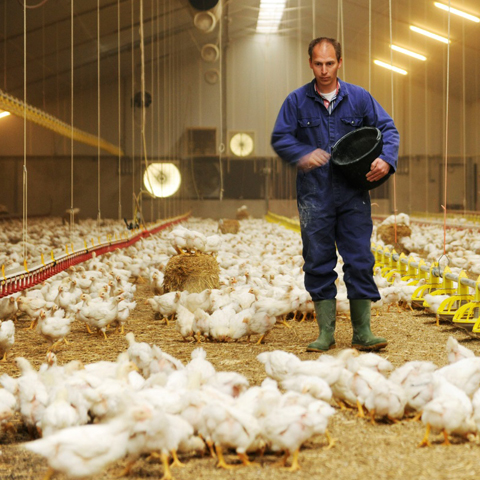Improving knowledge of intestinal health in poultry is driving overall poultry performance.
By Karen Wright
Intestinal health of poultry flocks has a direct effect on performance. It also has implications on bird welfare, food safety and environmental issues. But new gut–enhancing additives can improve intestinal health – and overall poultry performance.
A much more detailed knowledge of the population of microbiota (micro-organisms) in the gut has helped researchers to characterise them and to develop new techniques that will influence their actions.
The state of the bird’s gut affects key functions like digestive, metabolic, absorptive and immunological processes. In effect, it’s like the car engine – if the gut isn’t running efficiently, and there are disruptions, it will impact the normal work of one or more of the key functions.
The research into developing a better understanding of the poultry gut supports the increasing demand for economic efficiency, bird welfare and reduced environmental impact of poultry systems. In addition, nutritional techniques that improve gut health can directly reduce antibiotic use and help support antibiotic-free production systems.
New innovations in feed additives though, are already helping to improve intestinal health of our poultry, according to Cargill’s poultry specialist, Daniel Palcu.
“We’ve relied on feed additives, such as phytogenics, organic acids, prebiotics and probiotics, and medium chain fatty acids. And there are new technologies that enable us to evaluate the precise microbial populations in individual birds,“ he says.
Poultry gut microbiota is very complex. At the time of hatching birds have a virtually sterile gut but from this point onwards they will ingest micro-organisms from the environment, feed and water. The population of these micro-organisms which will include bacteria develops rapidly until about two or three weeks of age when it stabilises.
The balance of these complex microbiota is the key in maintaining a good gut health.
It is now possible using new technology to evaluate the microbiota in individual flocks by taking faecal samples, analysing their DNA and then assessing the microbial profile. This provides a far more accurate and faster result.
Supporting the beneficial microbiota encourages them to be dominant over the pathogenic microbiota. This dominance microbiota is known as competitive exclusion.
Promoting competitive exclusion and minimising specific harmful pathogens such as Salmonella, Clostridium Perfringens and Campylobacter brings advantages in controlling the risk of these diseases.
Phytogenic feed additives including quorum sensing QS inhibitors are proving beneficial in pathogen control in poultry.
QS inhibitors control the response of individual bacteria to the microbial community in their surroundings. In effect, it blocks a pathogen’s ability to communicate; rendering it ‘deaf and dumb’. If the pathogen can’t communicate, then it can’t multiply and so its pathogenicity is reduced.
In trials carried out by Scotland’s Rural College (SRUC), Biostrong Protect, a phytogenic feed additive was included in two groups of poultry – one reared on new litter and one on re-used litter; the latter presenting an increased challenge from pathogens. The performance of 35-day broilers was compared.
Two dosages of additive (300 g/t and 400 g/t) were compared with a non-treated group on re-used litter. The broilers on clean litter served as unchallenged control. The groups were fed a wheat-based diet supplemented with the enzymes phytase and endoxylanase and a coccidiostat.
Results showed that 400 g/t of additive significantly improved both body weight at 35 days from 2211g to 2316g and feed conversion ratio from 1.422 to 1.374 compared to the control on re-used litter.
“The ability to evaluate the micro-flora population in flocks and to tailor feed additives takes gut health management to a new level,“ says Palcu. “And if producers can take advantage of additives with QS inhibitors then we can anticipate a significant improvement in poultry performance. It will also, as a result, enable antibiotic use to be reduced.“


